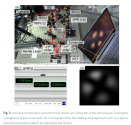Western Automakers worried about the Nexperia fallout while China automakers have pretty much secured their supply chain.
Guoxin Technology's automotive electronic chip shipments exceed 20 million units.
Guoxin Technology has achieved a significant milestone by surpassing 20 million cumulative shipments of automotive electronics chips—marking a major leap in China’s domestic semiconductor industry. The company's success reflects its sustained technological innovation and deep market penetration, especially in mid-to-high-end automotive electronics applications, where it provides reliable, domestically produced "Guoxin solutions" to support China’s national auto supply chain.
Core Technology Breakthroughs
48V Mixed-Signal Chip Innovation
Launched the industry’s first 48V airbag ignition chip (CCL1800B), filling a critical technological gap in new energy vehicle electrical architectures.
Developed a scalable 48V mixed-signal design platform offering higher power handling, superior energy efficiency, and enhanced safety—enabling expansion into multiple high-value applications.
CCFC3009PT RISC-V AI MCU Enters Tape-Out
A cutting-edge high-end automotive AI MCU based on a 22nm RRAM process and RISC-V CRV6 multi-core architecture (6 main + 6 lockstep cores).
Operates at 500MHz with over 10,000 DMIPS of pre-computing power.
Features an integrated NPU for hardware-accelerated AI processing and supports in-memory computing—significantly lowering the barrier to AI integration in automotive systems.
Performance rivals Infineon’s TC49X and Renesas’ U2B series, with superior cost-effectiveness.
Applied in radar signal processing, battery management, motor control, and domain controllers for intelligent vehicles.
Market Expansion & Client Coverage
Driven by China's "electrification, intelligence, and connectivity" transformation and national substitution policies, Guoxin has secured broad partnerships across the automotive value chain:
Vehicle Manufacturers: Supplying mainstream models to major OEMs including BYD, Chery, Geely, SAIC (SAIC-GM, SAIC-GM-Wuling), FAW, Dongfeng, Changan, Great Wall, BAIC, XPeng, Li Auto, Seres, GAC, JAC, King Long, and Hozon Auto.
Tier 1 Component Manufacturers: Maintaining strong collaborations with international and domestic suppliers such as Atech, Jingwei Hengrun, Kosda (Shanghai), BYD Technology, BYD Power, Yangtze Automotive Electronics, O-Film Intelligent, Yidingfeng, Ingenic, Aptiv, Songyuan Safety, Valeo, Weichai Power, AEOX, Wuhan Lingdian, Changzhou Yikong, and Kaisheng Power.
From January to September 2025, automotive chip revenue reached RMB 79.98 million, a year-on-year increase of 73.52%, with strong progress in mass production and vehicle installation.
Application Scenario Breakthroughs
Basic Control Scenarios: Achieved mass production in gateways, airbags, and instrument clusters. Over 4 million airbag MCUs and over 4 million automotive security chips have been installed. Instrument cluster and small node control chips are now supplied stably across major models.
High-End Intelligent Scenarios: Made key breakthroughs in domain control, drive-by-wire, powertrain, and airbag ignition:
CCFC3007PT is being mass-produced for ZCU/body and VCU domains.
CCL1600B powers airbag ignition systems.
CCFC3008PT supports advanced chassis control; communication chip CIP4100B tested in drive-by-wire systems.
Acoustic DSP chips deployed in smart cockpits.
These solutions are gradually breaking the foreign monopoly in high-end automotive electronics.
"MCU+" Solution Ecosystem: Value Creation & Cost Reduction
Guoxin moves beyond single-chip supply by offering integrated, system-level "MCU+X" solutions that reduce BOM costs and development complexity:
- Domain Controller: CCFC3007BC (PowerPC architecture) with ASIL-D certification, supports OTA upgrades, multi-interface integration (CAN/LIN/Ethernet), and national cryptographic security.
- Airbag Solution: Fully domestic "MCU + Ignition Driver + Accelerometer" chipset covering all vehicle types—providing full control over ignition circuits and collision data recording; breaks foreign monopoly.
- Drive-by-Wire Chassis:
- Brake-by-wire: CCFC3010PT (ASIL-D) + CCL2200B (14-channel driver) for high-precision braking control.
- Steer-by-wire: CCFC3008PC with fail-safe and redundancy features, suitable for EHB/SBW systems.
- In-Vehicle Audio: CCD5001-based solution supporting active noise cancellation, sound field optimization, and speed-sensitive volume adjustment—mass production launched in March 2025.
- Powertrain Solutions:
- Gasoline: Precise fuel/ignition control via CCFC2017BC/CCFC3007PT.
- New Energy: Multi-motor integration with VCU/MCU fusion, energy recovery management—reducing hardware modules and boosting efficiency.
- BMS for EVs: CCFC3008PC-based solution offering real-time cell monitoring, dynamic balancing, thermal protection, and OTA upgrades—passed PV testing and in mass production.
- Information Security: CCM4202S chip (EAL5+, national crypto level 2) supports international (RSA/AES) and national (SM2/SM3/SM4) algorithms—resists attacks and integrates into smart cockpits, T-BOX, and C-V2X.







